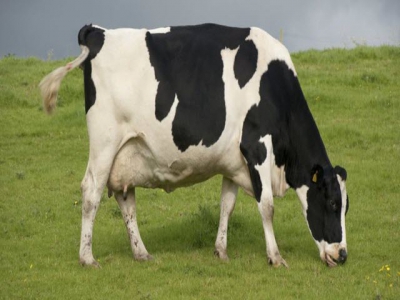Changing manure management could significantly reduce dairy methane emissions

Using "whole-dairy" emissions, study suggests managing wet storage of manure could help control methane emissions from California dairies.
New research published in the Journal of Dairy Science finds that changing the way manure is stored and handled is key to meeting California's 40% dairy manure methane reduction goal and combating climate change.
With financial support from Environmental Defense Fund (EDF) and cooperation from the Dairy Cares coalition, scientists worked together to produce the most thorough, detailed measurements of "whole-dairy" methane emissions in California to date, according to the announcement from EDF.
The results confirm that manure methane emissions come primarily from wet storage of manure, a valuable insight for measuring and controlling methane emissions.
The study used a variety of methods, including instruments mounted in the ground and deployed in aircrafts and vehicles, to measure methane emissions at two Central Valley dairies. All methods produced similar measurements of whole-dairy emissions, increasing confidence in the results, the announcement said.
"Until now, relatively little research has been done to measure and pinpoint specific sources of methane emissions at dairies in California," said Michael Boccadoro, executive director of Dairy Cares. "It is important that we base our strategies on sound scientific measurements from California dairies, and not just on studies conducted in other states. This information is critical as the dairy community works with our partners, including EDF, the California Air Resources Board (CARB), the California Department of Food & Agriculture and technology providers to reduce emissions in a cost-effective manner."
According to EDF, other study findings include:
* Direct methane emissions from ruminating animals, such as cow digestive gases or burps, tend to remain steady year-round.
* Emissions from manure storage can be highly variable and weather dependent; they are three to six times higher in summer than in winter.
* Emissions differences among dairies appear to be linked to the amount of manure that is stored in anaerobic, or wet and airless, conditions.
Dr. Claudia Arndt, former Kravis postdoctoral fellow at EDF and current postdoctoral fellow at the Tropical Agricultural Research & Higher Education Center, led the research.
"We attributed much of the difference in emissions between dairies to the proportion of manure stored in liquid form," Arndt said. "This suggests that reducing the amount of manure stored in that manner, or the length of time manure is stored in liquid form, could significantly reduce methane emissions."
Dairy methane emissions contribute up to 5% of California's carbon footprint. With a law passed in 2016, California became the first dairy region in the world to set a goal for a 40% reduction of methane emissions from dairy manure by 2030, EDF said.
The state's current programs to incentivize emissions reductions target the exact emissions sources pinpointed by this study: liquid manure storage. California has made $260 million available for dairy methane reduction projects. These include digesters, which capture methane and convert it to clean renewable energy and fuel, and projects that change manure storage to avoid methane production from anaerobic conditions. Several additional CARB-funded studies are under way, including research to measure changes in emissions on dairies where methane reduction measures have been installed.
Other authors of the open-access article include A.B. Leytem with the U.S. Department of Agriculture's Northwest Irrigation & Soils Research Laboratory in Kimberly, Idaho; A.N. Hristov with the department of animal science at The Pennsylvania State University; D. Zavala-Araiza with EDF; J.P. Cativiela with Dairy Cares; S. Conley with the department of land, air and water resources at the University of California-Davis, and C. Daube, I. Faloona and S.C. Herndon of Aerodyne Research Inc. in Billerica, Mass.
Có thể bạn quan tâm
 Researchers weigh global cost of animal diseases
Researchers weigh global cost of animal diseases In developing countries, disease kill up to half of all livestock, reducing nutrition, trade and prosperity.
 Can handling cause animal feed to separate?
Can handling cause animal feed to separate? Take a bowl full of shelled peanuts, add some heavy pebbles in the mix and then shake the whole thing until your arm is ready to fall off
 Clay supplements improve dairy cows' immune response to aflatoxins
Clay supplements improve dairy cows' immune response to aflatoxins Cows exposed to aflatoxin and fed aluminosilicate clay supplement showed improvement in liver function and immune response.